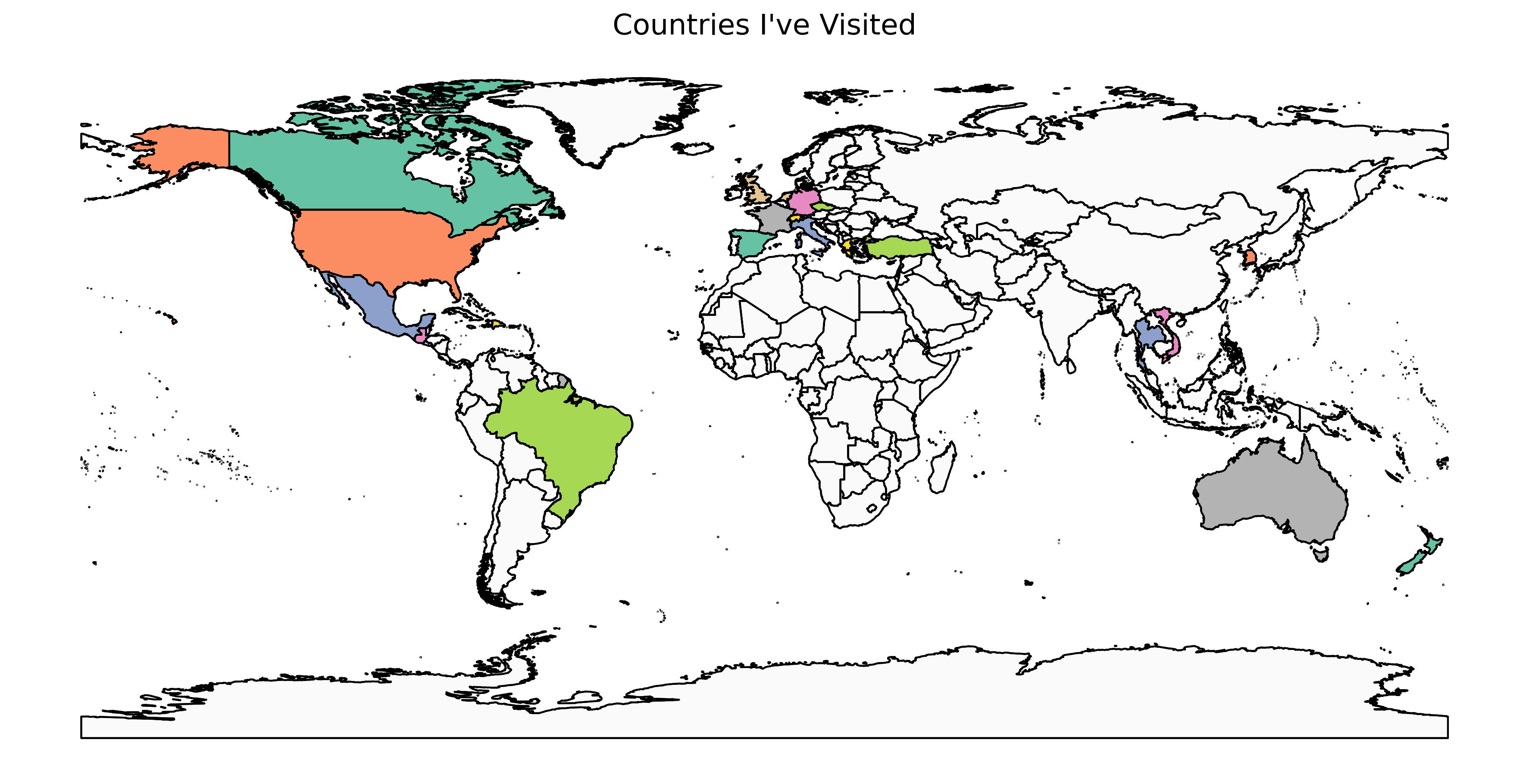Convolutional Neural Networks in PyTorch
Check out the interactive version with Jupyterlite.
This GitHub repository contains the .ipynb files.
Learning Handwritten Digits with Neural Networks (PyTorch)¶
Introduction¶
A famous dataset commonly used in Machine Learning applications for practicing and experimentation is the MNIST Digits Dataset. This dataset consists of numbers written from 0-9 by hand.
The goal is to train a learner to be able to later be able to automatically recognize newly written digits.

Importing Libraries¶
import torch
import torch.nn as nn
import torch.optim as optim
import torchvision
import torchvision.transforms as transforms
from torch.utils.data import DataLoader
Load Training and Test Datasets¶
# Specify the pre-processing transformations to use
transform = transforms.Compose([transforms.ToTensor(), transforms.Normalize((0.5,), (0.5,))])
# Training Set
trainset = torchvision.datasets.MNIST(root='./data', train=True, download=True, transform=transform)
trainloader = torch.utils.data.DataLoader(trainset, batch_size=64, shuffle=True)
# Test Set
testset = torchvision.datasets.MNIST(root='./data', train=False, download=True, transform=transform)
testloader = torch.utils.data.DataLoader(testset, batch_size=64, shuffle=False)
Downloading http://yann.lecun.com/exdb/mnist/train-images-idx3-ubyte.gz Failed to download (trying next): HTTP Error 403: Forbidden Downloading https://ossci-datasets.s3.amazonaws.com/mnist/train-images-idx3-ubyte.gz Downloading https://ossci-datasets.s3.amazonaws.com/mnist/train-images-idx3-ubyte.gz to ./data/MNIST/raw/train-images-idx3-ubyte.gz
100%|██████████████████████████████████████████████████████████████████████████████████████████████████████████████████████████████████████████████████████████████████| 9912422/9912422 [00:01<00:00, 6634348.61it/s]
Extracting ./data/MNIST/raw/train-images-idx3-ubyte.gz to ./data/MNIST/raw Downloading http://yann.lecun.com/exdb/mnist/train-labels-idx1-ubyte.gz Failed to download (trying next): HTTP Error 403: Forbidden Downloading https://ossci-datasets.s3.amazonaws.com/mnist/train-labels-idx1-ubyte.gz Downloading https://ossci-datasets.s3.amazonaws.com/mnist/train-labels-idx1-ubyte.gz to ./data/MNIST/raw/train-labels-idx1-ubyte.gz
100%|███████████████████████████████████████████████████████████████████████████████████████████████████████████████████████████████████████████████████████████████████████| 28881/28881 [00:00<00:00, 451633.17it/s]
Extracting ./data/MNIST/raw/train-labels-idx1-ubyte.gz to ./data/MNIST/raw Downloading http://yann.lecun.com/exdb/mnist/t10k-images-idx3-ubyte.gz Failed to download (trying next): HTTP Error 403: Forbidden Downloading https://ossci-datasets.s3.amazonaws.com/mnist/t10k-images-idx3-ubyte.gz Downloading https://ossci-datasets.s3.amazonaws.com/mnist/t10k-images-idx3-ubyte.gz to ./data/MNIST/raw/t10k-images-idx3-ubyte.gz
100%|██████████████████████████████████████████████████████████████████████████████████████████████████████████████████████████████████████████████████████████████████| 1648877/1648877 [00:00<00:00, 3458256.94it/s]
Extracting ./data/MNIST/raw/t10k-images-idx3-ubyte.gz to ./data/MNIST/raw Downloading http://yann.lecun.com/exdb/mnist/t10k-labels-idx1-ubyte.gz Failed to download (trying next): HTTP Error 403: Forbidden Downloading https://ossci-datasets.s3.amazonaws.com/mnist/t10k-labels-idx1-ubyte.gz Downloading https://ossci-datasets.s3.amazonaws.com/mnist/t10k-labels-idx1-ubyte.gz to ./data/MNIST/raw/t10k-labels-idx1-ubyte.gz
100%|████████████████████████████████████████████████████████████████████████████████████████████████████████████████████████████████████████████████████████████████████████| 4542/4542 [00:00<00:00, 1260622.60it/s]
Extracting ./data/MNIST/raw/t10k-labels-idx1-ubyte.gz to ./data/MNIST/raw
Training Set¶
The training set consists of 60,000 data points, whereas the test set consists of 10,000 data points.
trainset
Dataset MNIST
Number of datapoints: 60000
Root location: ./data
Split: Train
StandardTransform
Transform: Compose(
ToTensor()
Normalize(mean=(0.5,), std=(0.5,))
)
Test Set¶
testset
Dataset MNIST
Number of datapoints: 10000
Root location: ./data
Split: Test
StandardTransform
Transform: Compose(
ToTensor()
Normalize(mean=(0.5,), std=(0.5,))
)
Define the Neural Network¶
In the following neural network, we're defining a simple Convolutional Neural Network (CNN) designed for image classification. The MNIST Dataset consists of 28x28 pixel grayscale images.
The architecture of the neural network is as follows:
1. Convolutional Layer 1 (conv1):¶
- Type: Convolutional Layer
- Input Channels: 1 (since MNIST images are grayscale)
- Output Channels: 32
- Kernel Size: 3x3
- Stride: 1
- Activation Function: ReLU
This layer applies 32 convolutional filters (kernels) of size 3x3 to the input image. Each filter scans the input image and produces a feature map. The ReLU activation function is applied to introduce non-linearity.
2. Convolutional Layer 2 (conv2):¶
- Type: Convolutional Layer
- Input Channels: 32 (output from
conv1) - Output Channels: 64
- Kernel Size: 3x3
- Stride: 1
- Activation Function: ReLU
This layer takes the 32 feature maps from the previous layer as input and applies 64 convolutional filters of size 3x3. The ReLU activation function is applied again.
3. Max Pooling Layer:¶
- Type: Max Pooling Layer
- Kernel Size: 2x2
- Stride: 2
Max pooling is used to reduce the spatial dimensions (width and height) of the feature maps, making the network more computationally efficient. This layer takes the maximum value from each 2x2 region in the feature maps, effectively downsampling the feature maps by a factor of 2.
4. Flattening Layer:¶
- Type: Flattening Operation
The feature maps from the convolutional layers and the max pooling layer are flattened into a single vector. This vector serves as the input to the fully connected (linear) layers.
5. Fully Connected Layer 1 (fc1):¶
- Type: Fully Connected (Linear) Layer
- Input Features: 9216 (calculated as 64 channels * 12 height * 12 width, considering the input image size and the effect of the convolutional and pooling layers)
- Output Features: 128
- Activation Function: ReLU
This layer takes the flattened vector from the previous step and applies a linear transformation, followed by the ReLU activation function.
6. Fully Connected Layer 2 (fc2):¶
- Type: Fully Connected (Linear) Layer
- Input Features: 128 (output from
fc1) - Output Features: 10
This layer takes the 128-dimensional vector from the previous layer and applies another linear transformation to produce a 10-dimensional output. Each dimension corresponds to one of the 10 classes (digits 0-9) in the MNIST dataset.
7. Output:¶
- The output of the final fully connected layer is a 10-dimensional vector. During training and testing, this vector is passed through a loss function like CrossEntropyLoss, which applies a softmax function to convert the raw scores (logits) into probabilities for each class.
Summary of the Architecture:¶
- Input: 1x28x28 (grayscale image)
- Layer 1: Convolutional layer with 32 filters of size 3x3, followed by ReLU
- Layer 2: Convolutional layer with 64 filters of size 3x3, followed by ReLU
- Layer 3: Max pooling layer with 2x2 filter
- Flatten: Flatten the feature maps into a vector
- Layer 4: Fully connected layer with 9216 input features and 128 output features, followed by ReLU
- Layer 5: Fully connected layer with 128 input features and 10 output features
- Output: 10-dimensional vector representing class scores
# Model definition
class Net(nn.Module):
def __init__(self):
super(Net, self).__init__()
self.conv1 = nn.Conv2d(1, 32, 3, 1)
self.conv2 = nn.Conv2d(32, 64, 3, 1)
self.fc1 = nn.Linear(9216, 128)
self.fc2 = nn.Linear(128, 10)
def forward(self, x):
x = torch.relu(self.conv1(x))
x = torch.relu(self.conv2(x))
x = torch.max_pool2d(x, 2)
x = torch.flatten(x, 1)
x = torch.relu(self.fc1(x))
x = self.fc2(x)
return x
Visualization - Computational Graph of the Network¶
from torchviz import make_dot
from IPython.display import Image
net = Net()
dummy_input = torch.randn(1,1,28,28)
output = net(dummy_input)
dot = make_dot(output, params=dict(net.named_parameters()))
dot.format = 'png'
dot.render('model_graph')
Image('model_graph.png')
Training the Network¶
# Train the network
def train(net, train_loader, optimizer, criterion, epochs=5):
net.train()
for epoch in range(epochs):
running_loss = 0.0
for batch_idx, (data, target) in enumerate(train_loader):
optimizer.zero_grad()
outputs = net(data)
loss = criterion(outputs, target)
loss.backward()
optimizer.step()
running_loss += loss.item()
if batch_idx % 100 == 99: # Print every 100 batches
print(f'Epoch {epoch + 1}, Batch {batch_idx + 1}, Loss: {running_loss / 100:.4f}')
running_loss = 0.0
net = Net()
criterion = nn.CrossEntropyLoss()
optimizer = optim.Adam(net.parameters(), lr=0.001)
train_loader = DataLoader(trainset, batch_size=64, shuffle=True)
train(net, train_loader, optimizer, criterion, epochs=5)
Epoch 1, Batch 100, Loss: 0.5708 Epoch 1, Batch 200, Loss: 0.1596 Epoch 1, Batch 300, Loss: 0.1046 Epoch 1, Batch 400, Loss: 0.0838 Epoch 1, Batch 500, Loss: 0.0691 Epoch 1, Batch 600, Loss: 0.0631 Epoch 1, Batch 700, Loss: 0.0654 Epoch 1, Batch 800, Loss: 0.0579 Epoch 1, Batch 900, Loss: 0.0676 Epoch 2, Batch 100, Loss: 0.0389 Epoch 2, Batch 200, Loss: 0.0412 Epoch 2, Batch 300, Loss: 0.0374 Epoch 2, Batch 400, Loss: 0.0444 Epoch 2, Batch 500, Loss: 0.0385 Epoch 2, Batch 600, Loss: 0.0422 Epoch 2, Batch 700, Loss: 0.0411 Epoch 2, Batch 800, Loss: 0.0363 Epoch 2, Batch 900, Loss: 0.0385 Epoch 3, Batch 100, Loss: 0.0259 Epoch 3, Batch 200, Loss: 0.0213 Epoch 3, Batch 300, Loss: 0.0218 Epoch 3, Batch 400, Loss: 0.0170 Epoch 3, Batch 500, Loss: 0.0317 Epoch 3, Batch 600, Loss: 0.0329 Epoch 3, Batch 700, Loss: 0.0237 Epoch 3, Batch 800, Loss: 0.0240 Epoch 3, Batch 900, Loss: 0.0245 Epoch 4, Batch 100, Loss: 0.0161 Epoch 4, Batch 200, Loss: 0.0099 Epoch 4, Batch 300, Loss: 0.0129 Epoch 4, Batch 400, Loss: 0.0193 Epoch 4, Batch 500, Loss: 0.0113 Epoch 4, Batch 600, Loss: 0.0193 Epoch 4, Batch 700, Loss: 0.0168 Epoch 4, Batch 800, Loss: 0.0210 Epoch 4, Batch 900, Loss: 0.0196 Epoch 5, Batch 100, Loss: 0.0091 Epoch 5, Batch 200, Loss: 0.0095 Epoch 5, Batch 300, Loss: 0.0150 Epoch 5, Batch 400, Loss: 0.0172 Epoch 5, Batch 500, Loss: 0.0153 Epoch 5, Batch 600, Loss: 0.0149 Epoch 5, Batch 700, Loss: 0.0123 Epoch 5, Batch 800, Loss: 0.0148 Epoch 5, Batch 900, Loss: 0.0147
Testing the Trained Model¶
test_loader = DataLoader(testset, batch_size=1000, shuffle=False)
def test(net, test_loader):
net.eval()
correct = 0
total = 0
with torch.no_grad():
for data, target in test_loader:
outputs = net(data)
_, predicted = torch.max(outputs.data, 1)
total += target.size(0)
correct += (predicted == target).sum().item()
print(f'Accuracy of the network on the 10000 test images: {100 * correct / total:.2f}%')
test(net, test_loader)
Accuracy of the network on the 10000 test images: 99.01%





Comments